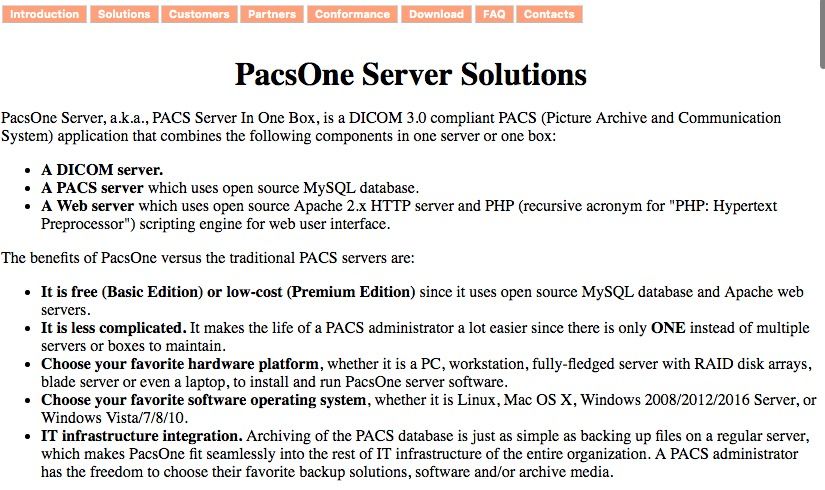

We highly recommend a RAID system: for example, you can install 4 identical hard disks in the MacPro, and format them as a RAID 5 system. For the PACS Server: choose a MacPro with 4TB of storage to store up to 25 millions of CT images.To build our PACS network, we will use OsiriX (always use the last available version!), as the DICOM viewer, and as the PACS server. Multiple Modalities, a PACS Server, and multiple PACS Clients (PACS Workstations / DICOM Viewers) PACS Network architecture (Q&R = DICOM Query & Retrieve protocol): Image fusion support to multi-modal modalities like PET-CT, PET-MR, SPECT-CT studies.3D post-processing functions to view the datasets in volume rendering, MPR or MIP.Powerfull 2D imaging functions to analyze the images (ROIs, window levels, zooming, ….).Complete DICOM protocol supports to handle all different types of DICOM images.Fast loading time to be able to load and browse 1’000 images in less than few seconds.Fast transferring time (only limited by the network bandwidth).The important qualities of a DICOM viewer are: These PACS Clients can query and retrieve the DICOM images from the PACS server, by using the DICOM network protocol (DICOM C-Move, C-Store, C-Get, C-Find, WADO, …). PACS Clients: computers with a DICOM viewer software, like OsiriX.
#KPACS FREE DICOM VIEWER SOFTWARE#
The PACS Server software needs to be robust, working flawlessly 24/7, with a powerful database engine, capable of storing millions of DICOM images. A PACS Server: a computer with a lot of hard disk space and a PACS Server software.These informations can be found in the Preferences > Listener window in OsiriX. IP address, TCP/IP port number and AETitle is the information required to connect each DICOM Node to the DICOM network. The clients display the images by using a medical imaging software: a DICOM viewer.Įach computer in a DICOM network are identified by their network address (IP address), a communication port (TCP/IP port) and a name (AETitle): each computer is a DICOM Node in the DICOM network. The server and the clients communicates by using the DICOM protocol (DICOM C-Store, WADO or Query & Retrieve).

The modalities (MRI, CT, PET, Ultrasounds, …) send the images to the PACS Server by using a DICOM “push” ( DICOM C-Store). Typically a PACS network consists of a central PACS server which stores a database containing the images, and of multiple clients that can retrieve and display these images on medical imaging software.
#KPACS FREE DICOM VIEWER MAC#



 0 kommentar(er)
0 kommentar(er)
